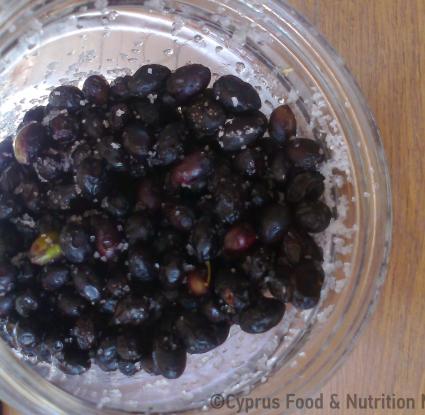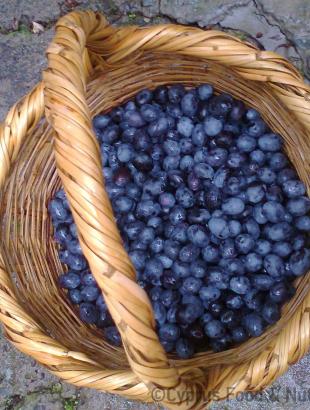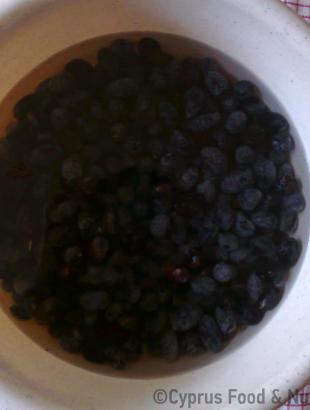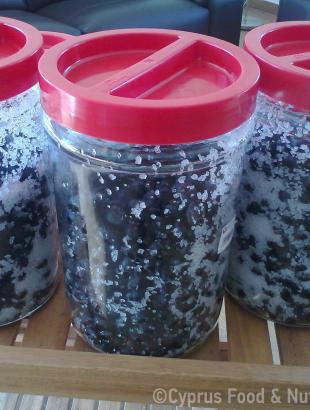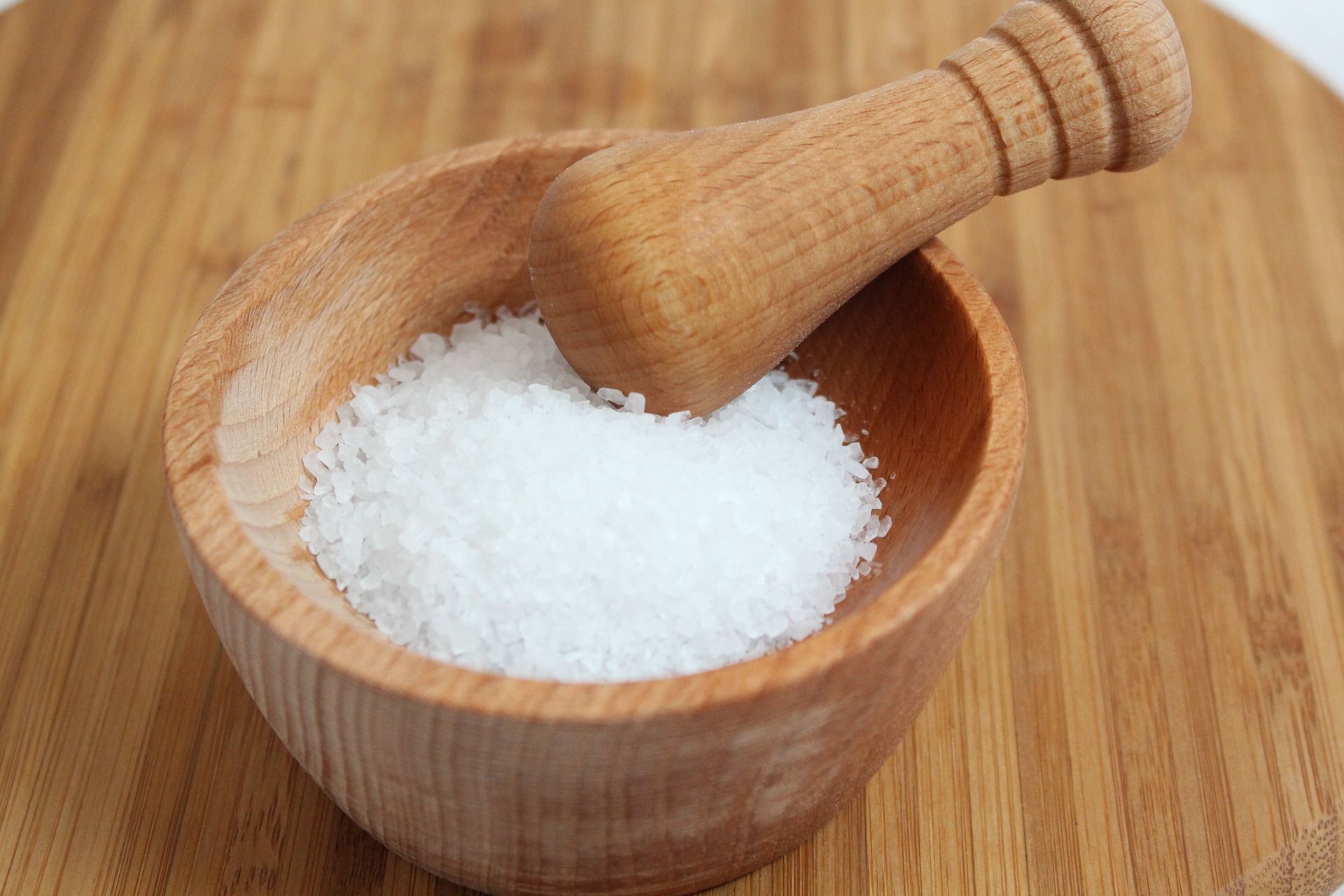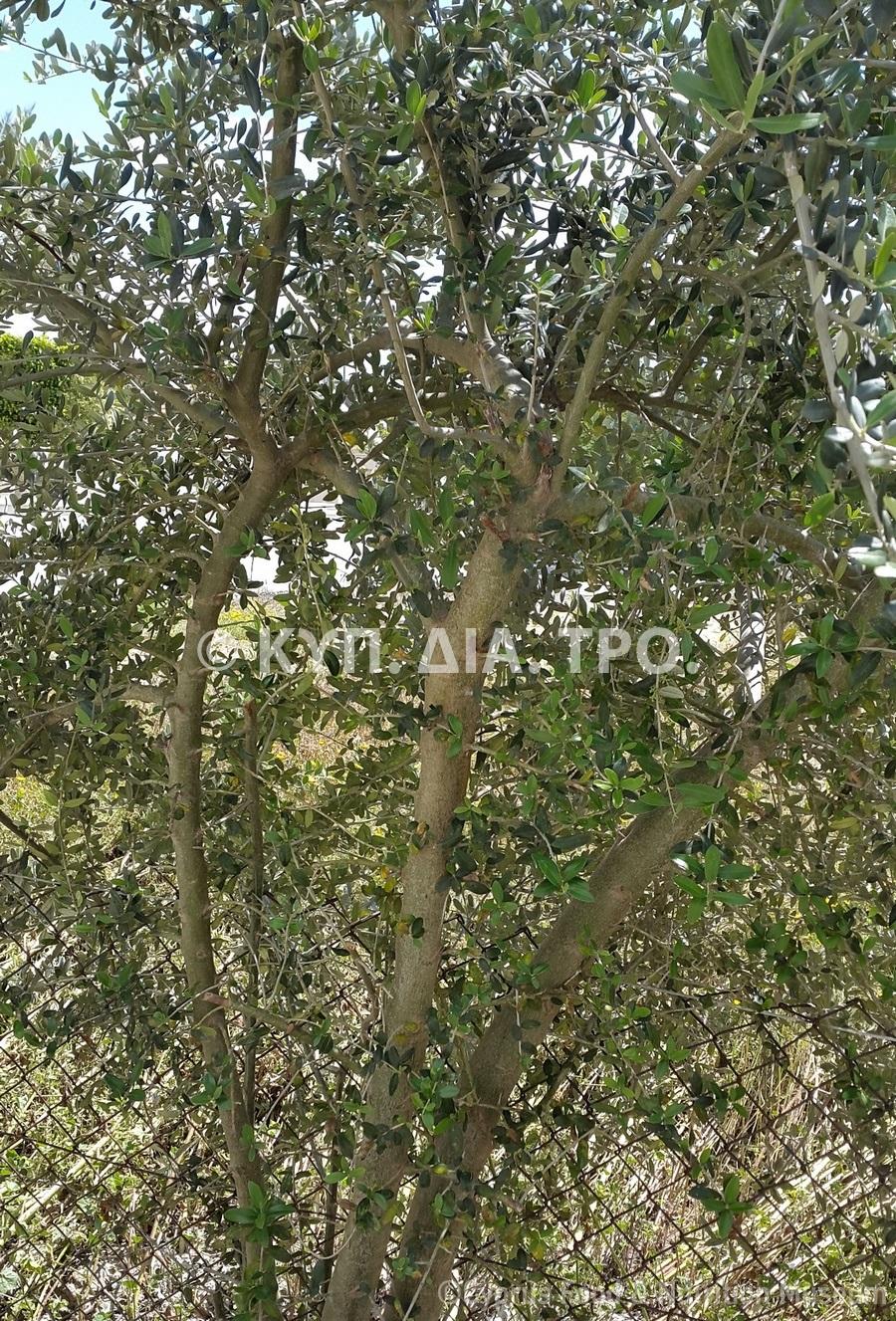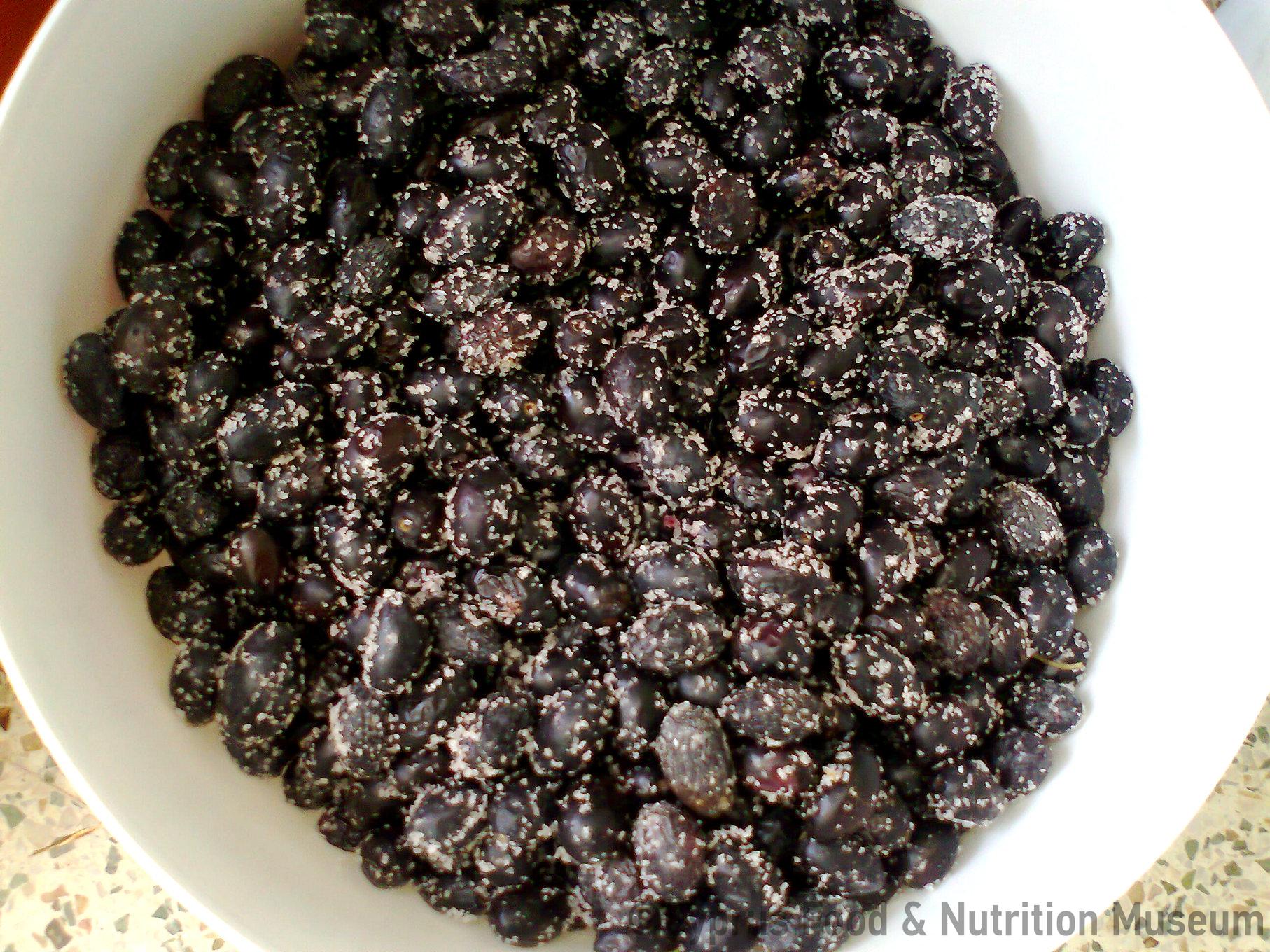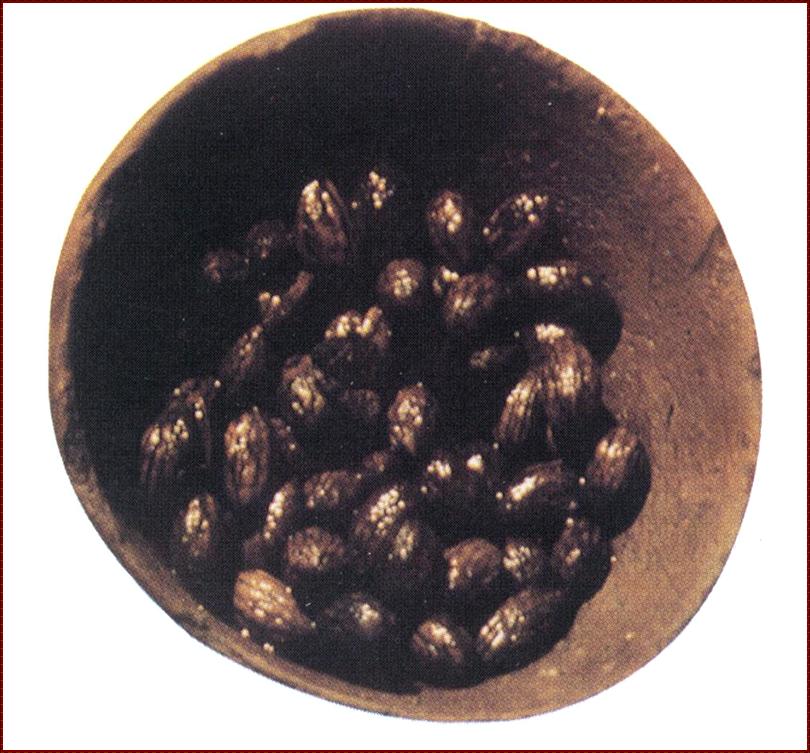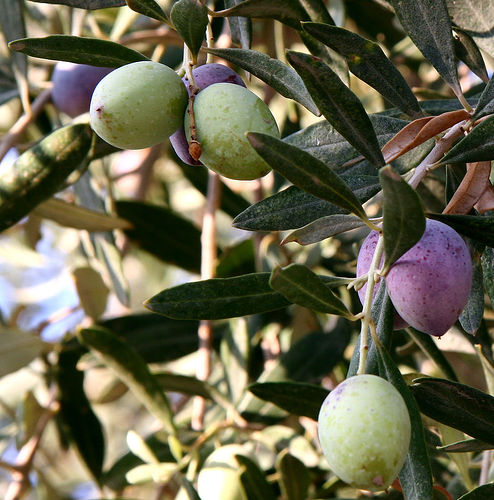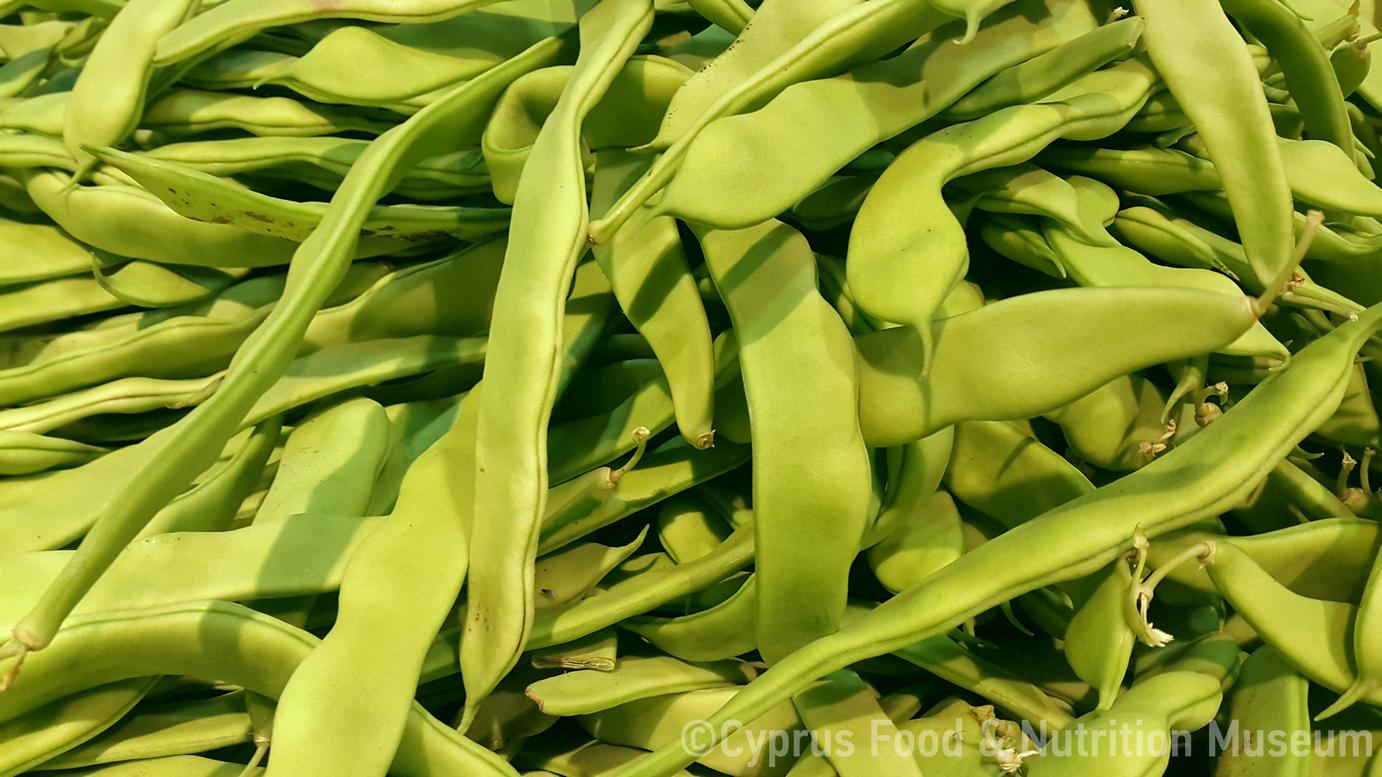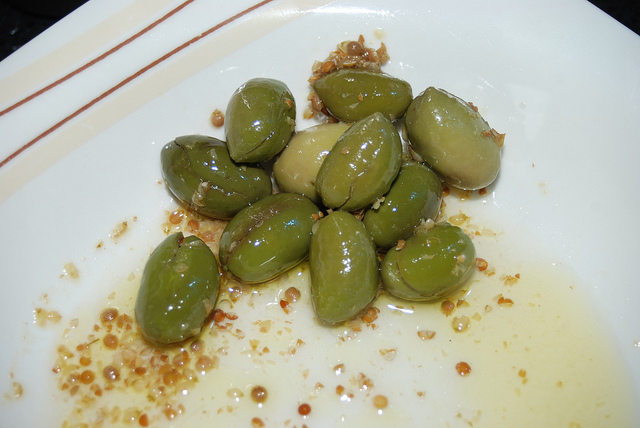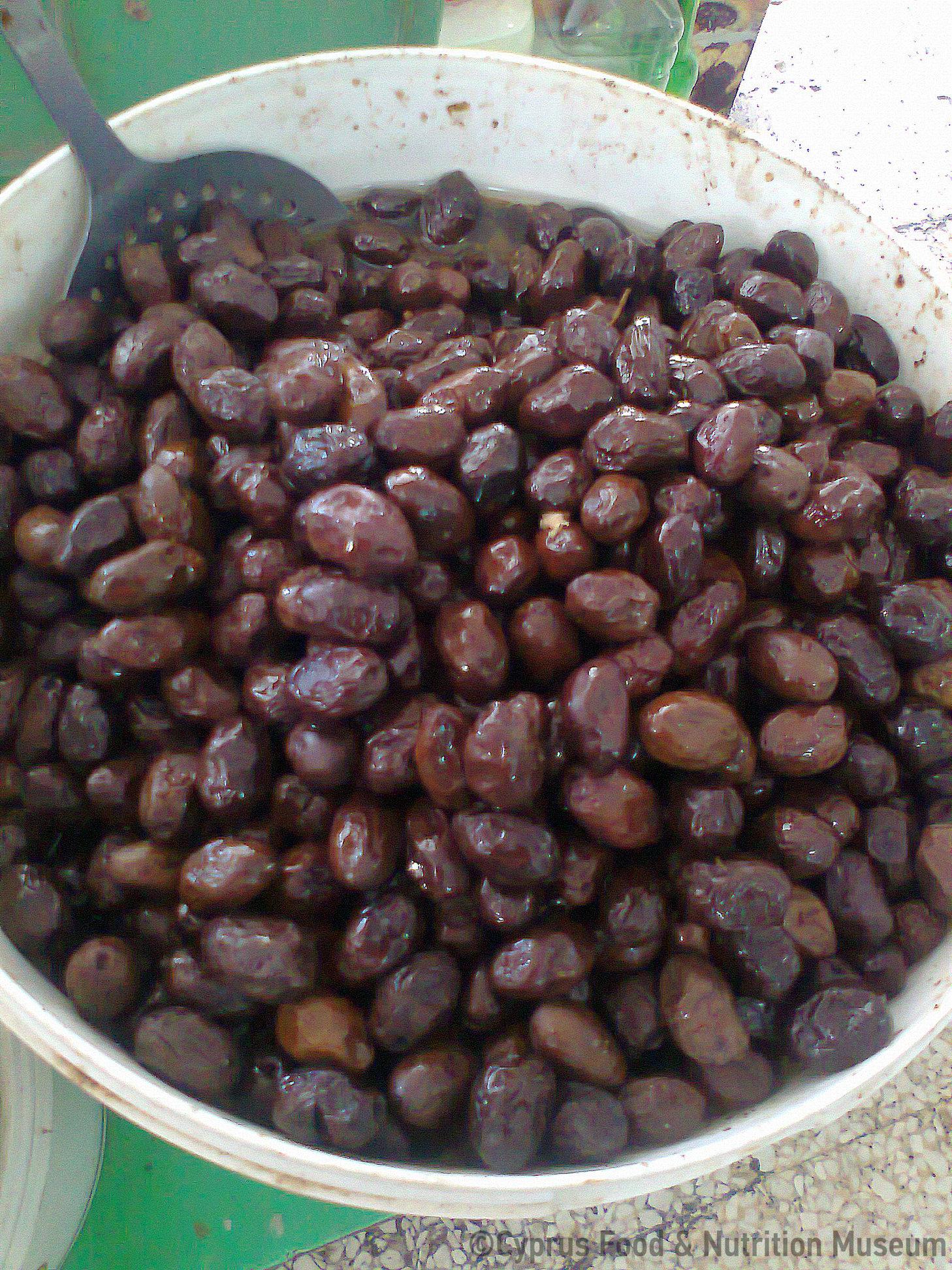Elies koumniastes were prepared using ripe black olives. Cypriot women would wash the olives, they would put them in brine for 3-4 days and would store them in a koumna (clay container) with salt.
Name - Origin
Black olives stored in koumna (clay container).
They used to call them koumniastes because they used to store them in koumna.
Koumniastes olives were made using ripe black olives. Cypriot women would was the olives under water, put them in brine for 3-4 days and store them in a koumna (clay container) with salt. Before consumption, they would wash the koumniastes olives with plenty of water (MANRE 2010, 6).
Functional and symbolic role
The most common food of farmers in the fields was olives and bread (Ionas 2001, 47). Women would also use black olives to make eliopitta (olive pie), eliopoulles and eliotes (Kypri - Protopapa 2003, 123, 277). Finally, olives were particularly often consumed with legumes (Hadjiicostas 1995, 150).
Olives together with bread and halloumi were offered after a funeral or memorial service as ‘consolation’ (Kypri, Protopapa 2003, 226).
Due to their black colour, olives symbolised a dead persons and so they were offered as ‘consolation’ (Rousounides 1988, ch. 1)
Additional information and bibliography
Black olives which were to be prepared as koumniastes were collected in the end of October.
Ionas I. (2001), Τα παραδοσιακά επαγγέλματα της Κύπρου (The traditional professions of Cyprus), Publications of the Centre for Scientific Research, XXVII, Nicosia.
Kypri Th. - Protopapa K. A. (2003), Cypriot traditional kneading of bread and pastries. Their use and significance in customary life, Publications of the Centre for Scientific Research, XVIII, Nicosia.
Rousounides A. Ch. (1988), Δένδρα στην ελληνική λαογραφία με ειδική αναφορά στην Κύπρο (Trees in Greek folklore with special reference to Cyprus), Vol. A, Publications of the Centre for Scientific Research, XII, Nicosia.
Ministry of Agriculture, Natural Resources and Environment, Department of Agriculture (2010), Preservation of olives and olive preparations, Press and Information Office, Nicosia.
Hadjicostas L. (1995), «Η ελιά στο χωριό μου την εποχή του μεσοπολέμου», Λαογραφική Κύπρος 25,45, 149-154.
Dimitra Demetriou, Petroula Hadjittofi, Argyro Xenophontos

